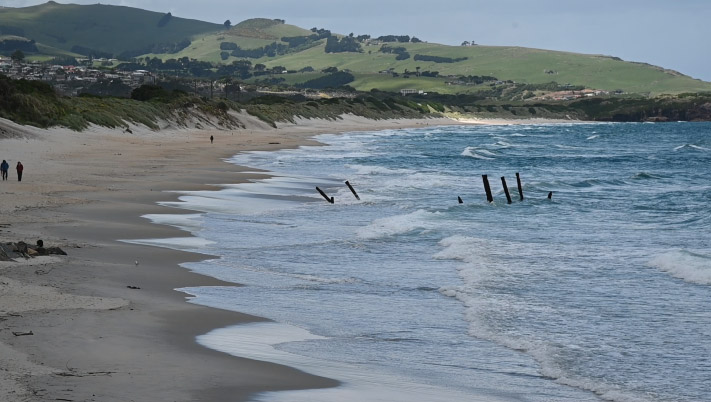
It has been suggested a trial might run for five years, allowing time to evaluate whether a reinstated structure is effective in retaining sand on the Dunedin beach.
The groyne might be pulled out at the end of the term of consent if the trial is not successful or, if there are signs of success, a longer term might then be applied for.
The Dunedin City Council faces a decision next week about whether to seek a resource consent to reinstate a groyne.
An attempt by the council to establish that consent was not needed, and that it should be able to get permission through a cheaper and less onerous process, failed in February.
The move was made despite legal advice from Anderson Lloyd that success through this avenue was unlikely.
Dunedin Mayor Jules Radich, an advocate for groynes, said last month the manoeuvre was worth a try, "to see if you can do it the easy way first".
Knocked back on this bid by the Otago Regional Council, the city council now has to decide if it should pursue a resource consent.
Anderson Lloyd advised in November last year expert evidence was normally required to support an application for resource consent and evidential support for a groyne evaluated.
If support could not be achieved, an evaluation would need to be made about the likelihood of success, and whether the application should proceed, the law firm said.
"It might prove to be more straightforward for a coastal expert to support a groyne as a trial to monitor its performance, rather than predict its success over a longer timeframe.
"If this is the case, a trial may be more realistic to consent."
The consenting process, from the date of the application being lodged to a decision, could take six months.
City council staff estimated the cost of consent and construction could be about $500,000, or fall within a range of $345,000 to $720,000.
This consists of producing an assessment of environmental effects and technical assessments to support a resource consent ($100,000 to $150,000), legal costs ($50,000 to $200,000), consent-processing costs ($15,000 to $50,000) and constructing a single line of piles planked together ($180,000 to $320,000).
On top of that, up to $50,000 might be spent annually on maintenance and between $25,000 and $60,000 on monitoring.
It was expected $140,000 might be saved on the cost of construction (down from $320,000) if pinus radiata timber poles were used instead of Australian hardwood poles.
Anderson Lloyd said the council could choose to seek a longer-term consent, up to a maximum of 35 years, or a short term, "say for five years".
It was likely an application for resource consent would require expert advice on coastal processes and engineering, landscape and visual effects, marine ecology, and planning.
It was "reasonably likely" the application would need to be publicly notified, "because the environment is a public space, the proposal has the potential to affect the public, and there is a high level of public interest".
In a summary of a pre-application meeting in February, the Otago Regional Council said limited notification or public notification of the application was a possibility.
The regional council also reiterated its view reinstating a groyne could not be considered a permitted activity under coastal rules.
Legal advice to the regional council from Wynn Williams last month was the rules did not permit "reconstruction or replacement of those parts of a groyne structure that have been absent for many years".
Anderson Lloyd had already concluded back in November an argument a reinstated groyne could be considered a like-for-like replacement had a low chance of succeeding.
"This is because we expect [the regional council] would take a conservative approach and be less likely to accept a new groyne as a permitted replacement or reconstruction given the original structure has been largely absent for some time."
Groynes have been a feature of St Clair Beach since early in the 20th century, but they have often been allowed to fall into disrepair.
Mr Radich has consistently argued they were effective when new or repaired, citing photographic evidence and engineering reports.
In their report for elected members ahead of next week's meeting, city council staff highlighted two options — seeking consent for a trial groyne and the status quo.
Among the advantages listed for a trial were it would be a tangible example of the council attempting to respond to erosion, sand may accumulate at the location of the groyne and the structure could be easily removed if necessary.
Lack of a budget for a groyne trial was one disadvantage.
The status quo was described as continuing with technical investigations of a groyne or groynes and other coastal management options in the St Clair to St Kilda coastal plan.
This might provide "an opportunity for ongoing public engagement to discuss the technical assessments for the various coastal management options", council staff said.
However, the timeframe required for various technical assessments would require "continuation of temporary measures to manage the erosion of the coast".












